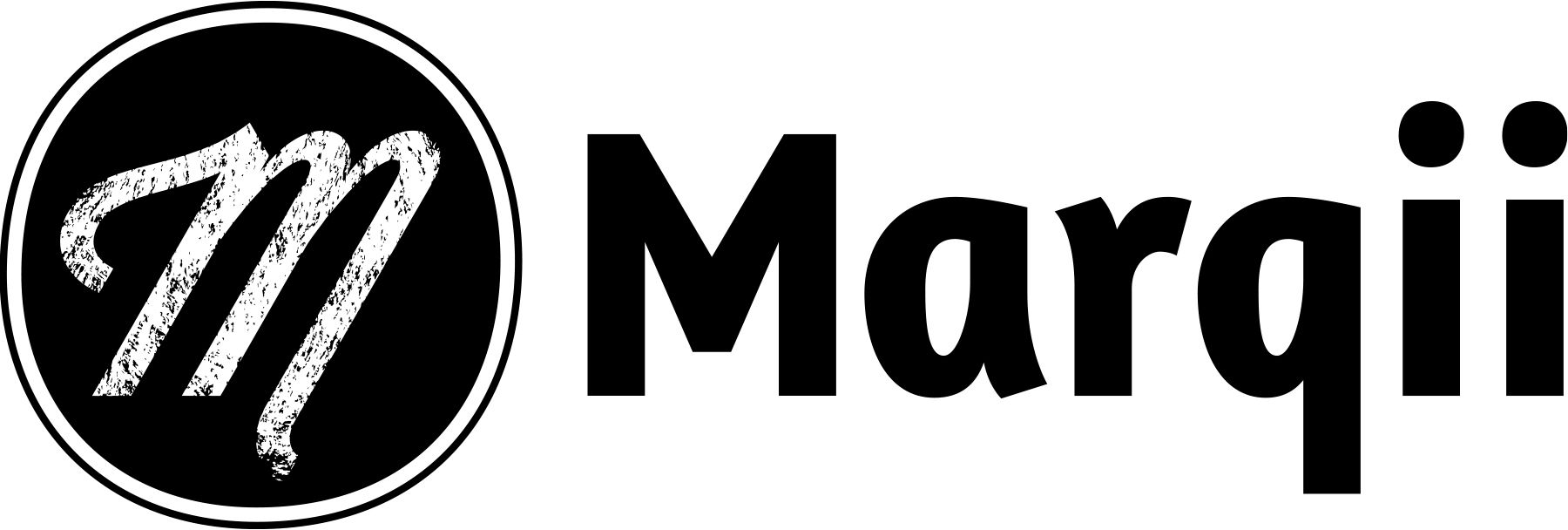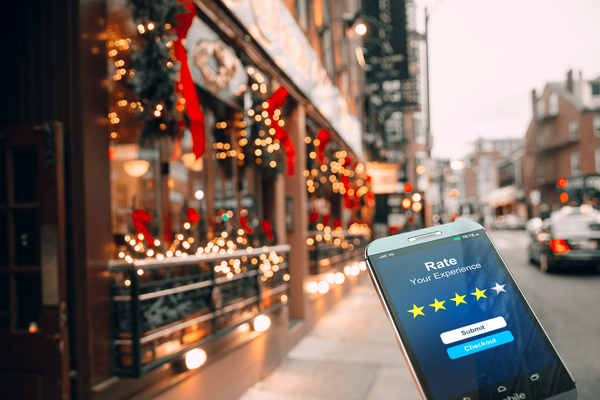A Comprehensive Guide To Digital Restaurant Management: SEO, Hours & Location, Menus, Reviews, and Analytics
This comprehensive guide to digital restaurant management is for restaurant operators looking to take control of their digital presence and provide an accurate, consistent experience for online customers.
The strategies and steps laid out in this guide are the same ones used by thousands of restaurants right now to reach more customers, increase revenue, and deliver a uniform customer experience.
Let’s dive in.
How To Use This Digital Restaurant Management Guide
We wrote this guide to follow the same path a customer would take, starting with their first search when trying to learn more about your restaurant.
1) Hours and location: Are you open and in close proximity?
2) Menus: What does your restaurant offer?
3) Reviews: What are customers saying about your restaurant?
As we go through each step, we’ll discuss why and how managing this information is important to your restaurant's success in attracting new customers and strengthening your online presence.
We’ll then wrap up the guide with a look at analytics to see how you can use the collected data to understand what’s working with guests so you can make informed decisions on how to keep customers coming back.
Before we begin, though, we need to understand SEO.
SEO is the single best way to reach new customers, and it’s directly linked to managing the digital side of your restaurant.
It’s the perfect example of getting two birds with one stone.
You need to manage your online details, like hours, location, menus, and reviews, to give customers accurate and uniform information—and those are some of the exact same steps required by SEO to rank higher on search engines.
But for it to work well, it needs perfect execution.
Let’s get into it.
SEO: What Is It And How To Reach New Customers
SEO stands for Search Engine Optimization, and it’s the techniques and practices used to get websites ranked higher on search engines like Google.
You might be thinking, “Whoa, I’m not a tech-savvy person. This sounds like it can get complicated.”
You’re right; SEO can get complicated, which is why we are only focusing on non-technical SEO steps.
These steps are simple enough that anyone who uses a computer can easily knock them out but still make a significant impact on how their website ranks on Google.
Now, let’s take a closer look at SEO for restaurants.
Restaurant SEO
When people are discussing restaurant SEO, what they are actually talking about is “local SEO.”
Local SEO is just like regular SEO, but instead of trying to reach everyone across the Internet at a global level, it focuses solely on reaching people in a very specific area—like a state, city, neighborhood, or even street.
Restaurants use local SEO techniques because restaurants operate on a local level, meaning the vast majority of customers are relatively close to your location.
So, by using local SEO tactics, you’re telling Google where your restaurant is located and to connect your website with hungry customers looking for food in your local area.
For example, if a person in Decatur, Georgia, wants Italian food, they will first jump on Google and search “best italian food decatur ga.”
After hitting ‘search,’ Google will spit out a search engine results page (SERP) with what it believes to be the best answer to that search query.
Now, Google’s only intent is to try and connect searchers with the best possible answer to their question—in this case, it’s “what’s the best Italian food in Decatur, Georgia.”
Google then scours the Internet, looking for the answer.
It’s now your job to show Google that your restaurant is the answer it’s looking for, and the only way to do that is by using local SEO tactics.
Here are the four best 4 local SEO techniques to rank higher on Google.
1) Complete a Google Business Profile for each of your locations.
2) Use local keywords on each of your locations’ profiles AND your website.
3) Increase reviews and ratings
4) Get listed in more online directories, like Yelp, Facebook, Bing, and OpenTable
1) Complete your Google Business Profile
You’re already familiar with a Google Business Profile (GBP), even if you don’t recognize the name.
Whenever you Google a business, that company’s information will pop up in a panel on the right side of the screen.
Like this:
Your GBP is often the first touch point for new customers when searching for your restaurant, so it goes without saying that accurate information is super important.
A GBP will contain more than just hours and location—it’s where customers can find:
- Links to your website
- Directions
- Menus
- Phone number
- Address
- Photos
- Reviews
- Events
- Reservations
- Online ordering
- Service options
You get the idea—it’s a fast and easy way for customers to learn what you offer, and if you haven’t claimed your GBP yet, you’ll need to make that happen ASAP.
Setting up a GBP is easy. Just go to this link right here and follow the steps Google provides.
If creating a GBP feels overwhelming, use this link to schedule a video call with a Google business advisor to take you through the process and give you recommendations custom-tailored to your restaurant.
The goal with a GBP is accuracy and thoroughness—don’t leave any questions or fields empty.
Local searches are becoming more and more specific – instead of just “pizza near me,” people are searching for “dog-friendly patio with happy hour open now.”
Google reads all the information you put in your GBP, so the more you give, the more it has to go off of, and the same is true for patrons. Even the smallest detail might push a customer to visit your restaurant over a competitor, so take your time, be meticulous, and be accurate.
2) Use local keywords on profile AND your website
In our first example, someone was looking for Italian food in Decatur, GA. We saw they typed, “best italian food decatur ga”—this is a keyword.
Keywords are what people type into a search engine when looking for answers to a question.
Google then uses those keywords to connect searchers with content that has been indexed under those keywords.
Because restaurants use local SEO tactics, you’ll want to put words related to your area on your listings and your website.
For example, Deschutes Brewery in Bend, Oregon, does a great job of using local keywords.
It’s clear where Deschutes is located, but how they placed the keywords naturally on their website is even better.
Don’t try to cram keywords anywhere you can find space.
Even if it’s just one time, a properly used keyword has power—Google will find it and use it to rank you higher.
Local keywords include:
- City
- Neighborhoods
- Street
- Landmarks
- Cuisine
Restaurant SEO includes naming the cuisine you offer on your website. This seems obvious, but you’d be surprised—Google needs the info to connect you with local searchers craving your style of cuisine.
For example, if you're looking for BBQ in Spring Valley, California— you’d search “bbq spring valley ca” and get this result.
CaliBBQ currently sits in the #1 position for this keyword after Yelp.
The reason?
They do a knockout job of local SEO on their website.
Again, CaliBBQ doesn’t overdo it on their keywords, though. Their placement is natural and enhances the content of the website.
Lastly, you’ll want to place keywords in your meta title and description. This isn’t as complicated as it sounds; you’re already familiar with this data.
It’s the bold blue title on a search engine results page and the smaller text underneath the blue text.
You can see that CaliBBQ doesn’t miss the opportunity to use local keywords in their meta title and meta description. These simple steps go a long way toward helping your restaurant reach new customers.
Lastly, you’ll want to place the same keywords in your listings for each location. Google cares about consistency, so it’s important your information matches, everywhere your restaurant is mentioned online.
3) Increase reviews and ratings
Google loves reviews.
Why?
Because it shows Google that customers are engaging with your brand and that what you offer is relevant to people in the local area.
Other reasons Google likes reviews are:
- Shows trustworthiness
- Keeps content fresh
- Uses lots of local SEO
- Social Proof
- Increases click-through rate
Getting customers to leave reviews isn’t difficult—you just have to remind them to do it and give them accessible opportunities to make it happen.
You can do this by:
- Asking in person
- QR code or link on the bottom of receipts
- Reminder email after getting food delivered
- Easy response from SMS text
Don’t just take one of these approaches. Use as many as you can, and the reviews will collect rapidly.
Cali BBQ has nearly 2,500 reviews, which is one of the reasons it ranks at the top of the list on a search engine results page.
We’ll do a deeper dive further into the guide, but understand that reviews play a significant role in ranking higher on search engines.
Taking a passive approach to reviews leaves money on the table and is a huge missed opportunity.
4) Get listed in online directories
Customers don’t solely search on Google when looking for new restaurants. They also go to familiar websites like:
- Yelp
- Apple Maps
- YellowPages
- CitySearch
- Bing
- Open Table
Claiming your business on one of these platforms is similar to setting up your GBP. You’ll again want to be surgically accurate and meticulous with your restaurant's details.
Yelp says that the more information you provide them, the quicker your business will be listed—roughly one to two days.
Online directories are packed with information about your restaurant that Google can use to verify your worthiness to rank high on search engine results pages.
The other benefit of being listed on multiple online directories is the backlinks to your restaurant’s website.
For example, this is a backlink to Deschutes Brewery’s website on Yelp.
A backlink is a link from one website to another.
Google sees backlinks as a vote of confidence—that the link-sharing site says, “This site is legitimate and trustworthy.”
Not all backlinks are created equal, though, so having backlinks from well-known and popular websites like Yelp and TripAdvisor is huge for SEO and goes a long way toward bumping your restaurant up in the ranks.
Get listed in as many online directories as possible, and you’ll have a healthy amount of backlinks pointing to your website.
Getting listed on online directories will be similar to setting up your GBP.
You’ll need to claim your business and fill out the categories. Again, be thorough and accurate with your information. Make sure all the information matches, everywhere you enter it. Even the difference between “Deschutes Brewery” and “Deschutes Brew House” can lower your ranking. Google is watching and grading your performance, so make it count.
Now that you understand restaurant SEO better, the rest of the guide will focus on managing your restaurant’s digital online presence, which will draw heavily on your newfound SEO knowledge.
We’ll begin with a typical first question a customer has when wanting to learn more about your restaurant.
What are your hours, and where in town are you located?
Hours And Location
Lead Customers To Your Doors
Customers start with hours and location because if you’re closed or too far away, they don’t want to look at a restaurant that isn’t available to them.
Right there is the reason your hours must be accurate.
If a customer’s first touch point is finding your hours and checking to be sure you’re open before they visit, how will they feel after driving across town just to find out you’re closed?
Probably pretty ticked off.
Not a very good first impression, and the likelihood of them trying again at a different time is probably slim to none.
Here’s the major bummer—if it’s happened to one customer, it’s probably happened to many more.
Over time, that could mean hundreds of customers having this same experience, permanently damaging your reputation.
And your website isn’t the only place your hours are posted.
All those online directories you worked hard to complete also contain your business hours.
There are dozens of places across the Internet showing your location and hours; if that changes, customers should be aware of it.
Reasons your hours might change include:
- Early closures
- Holiday hours
- Special events
- Weather-related closures
- Happy hour
There are two ways to change your hours online.
- Manually go to each online platform and change it yourself.
- Use software (like Marqii) that connects with each platform and changes it simultaneously.
Automatically, you can see why managing your hours manually would be a hassle—it takes HOURS to complete. Then, once the holiday or event is over, you’ll need to go back in and switch the data back to your original hours.
Who has time for that during the holidays?
The negative impact that’s not so obvious is the chance for inconsistencies online, hurting your SEO and search engine rankings.
If you have 27 listings you need to change, there’s a chance a few of them might slip through the cracks. Meaning that the hours are switched incorrectly or not switched back to standard hours at all.
Google doesn’t like inaccuracies and will mark you for data that doesn’t match.
The obvious solution is to use software that connects to all your listings so you can make consistent changes from one central dashboard.
For example, Marqii connects with over 80 different online platforms, so instead of taking huge amounts of time and opening opportunities for mistakes, you can switch store hours in one easy step.
(If you’d like to see how much time you can save using Marqii, try out our Time Saving Calculator.)
Here is a glimpse of the Marqii dashboard so you can see just how simple it is.
Where your restaurant is located rarely changes (unless you’re a food truck), but knowing your address is surgically accurate across multiple listings is critical for new guests and Google.
Manually entering your address on dozens of platforms leaves room for error, and there’s no need for data audits because all information is synced with one dashboard.
Having consistent hours and locations across all online platforms is the first step to leading customers to your door.
Now, let’s dive into menus and how managing them keeps customers happy.
Menus
Keep Customers Happy With Consistency
84% of diners research a menu before deciding where they’d like to eat—that’s huge.
That means potentially thousands of people are looking for a bite to eat right now in your local area.
If those thousands of people were lined up waiting to get into your restaurant, you wouldn’t hand them outdated menus, would you?
Of course not.
But the idea is the same if you leave outdated menus on your websites and online directories.
Customers arrive at your restaurant ready to order that mouthwatering entree or delicious cocktail only to be told that it’s not actually on the menu.
It’s awkward and disheartening for customers and can erode trust and credibility, causing guests to question the reliability and professionalism of your restaurant.
When customers see an online menu, they expect it to reflect the current offerings.
This can be especially important for seasonal restaurants that need to regularly change their menu.
Not only will guests be curious about what you’re offering, but failing to change it with the seasons can make it look like the kitchen isn’t evolving.
Keeping up on menu changes gives something for customers to look forward to, like the release of any new exciting product.
This will attract foodies and help your restaurant grow a solid base of regulars because they know all they need to do is check online to see what is interesting on the menu that night.
So, what’s the best way to manage your online menus?
Like hours and location, you have two options.
- Go in and change it manually yourself or pay an employee to do it.
- Use software (like Marqii) to integrate and connect with all online platforms from one easy-to-use dashboard.
Doing it manually comes with its risks and challenges.
The menu needs to be accurate across all platforms for guests and SEO.
And it needs to be readable by Google - no jpg or pdf menus.
You’ll also want photos paired with menu items when possible.
Customers are accustomed to seeing visual representations with online menus—plus, it does a tremendous job of selling food.
Here’s an example of Groucho’s Deli on Yelp.
Any menu changes online that accompany photos need to have the images changed as well.
Doing this yourself, one platform at a time, is incredibly time-consuming, especially if you have multiple locations, like Groucho’s.
Keeping up with menu and photo changes for multiple locations on dozens of platforms could become a full-time job.
And let’s face it, running restaurants is difficult—there are too many things going on inside the restaurant on a daily basis to keep up with menu changes.
Eventually, updates on certain platforms will get skipped, and over time, inaccurate data will increase online.
That’s why we suggest using option number 2—use a software service like Marqii to control menus and photo updates from one simple dashboard.
Here’s what Marqii’s menu dashboard looks like.
Any menu changes made on Marqii automatically change menu items in real-time on your online listings. There’s even a widget for your website, so your site always matches what’s on other online platforms like Google and Yelp.
Super easy. Superfast.
Here’s what Kitra Musick, general manager of Deschutes Brewery, said after they partnered with Marqii:
"We used to spend a full day on data entry every time we changed our menu. Now every time we have a menu change, we do it in our POS, and it’s automatically updated the next day. Marqii has saved our team so much time. "
Marqii also integrates with most major POS brands, like Toast, Square, Clover, LightSpeed, and many more.
Allowing you to keep one source of truth and control your menus from the same central hub you use for the rest of your business’s operations.
Other software companies have similar solutions to online listing management, but none are designed specifically for the restaurant industry, like Marqii.
Once customers know your location, see your hours, and have cruised through your menu, they’ll want to check reviews to see if the experience looks as good as the food.
Reviews
Why They’re Important And How To Leverage Them
Good reviews are like a license to print your own money. If customers are on the fence about coming in, great reviews get them through the door.
Reviews are the social proof every customer seeks when deciding on a purchase or experience.
It’s too risky to walk into a random restaurant off the street and hope for the best.
Before the Internet, restaurants gained popularity slowly through in-person word of mouth. Day after day, patrons would tell their friends and family about their experience at the new pizza spot downtown.
Within a few months, there’s a line around the block to get in.
The Internet expedited that process tenfold.
Reviews are so much more than just social proof; they:
- Build trust and credibility: Good reviews serve as a stamp of approval, influencing others to visit.
- Increase Visibility: Platforms like Google, and Yelp factor in review quality and quantity in their ranking algorithms. Good reviews help you rank higher.
- Give Constructive Feedback: Reviews show you where you’re making customers happy and where you’re dropping the ball, allowing you to fix problem areas in your business.
- Boost Revenue: Studies have shown a direct correlation between positive reviews and increased revenue. Even a one-star increase on platforms like Yelp can significantly increase a restaurant's revenue.
- Enhance Brand Image: A consistent stream of positive reviews helps carve out a positive brand image, setting the restaurant apart from competitors.
These are reviews from Margaritaville’s GBP—it’s easy to see the power of reviews in this example.
4 stars, over 1,200 reviews, with pictures and first-hand accounts of what it’s like going to Margaritaville.
If a customer were debating on whether to go, these reviews would get them in the building.
Ok, now we know the power of reviews—how do we leverage them to your advantage so you can make more money?
One word: engagement.
Engagement means setting up a system to regularly check all online platforms—GBP, Yelp, Facebook, CitySearch, etc.
Respond to all reviews, both positive and negative.
For positive reviews, thank the customer for their feedback and patronage.
For negative reviews, address the issue appropriately—apologize for any inconvenience and see how you can redeem the experience. Avoid becoming defensive.
Don’t use generic responses, and try to make each one personalized to the customer leaving the review. It doesn’t need to be elaborate, just enough for the guest to feel heard and valued.
If you're ready to dig deeper into resp0nding to reviews, check out our post Anatomy of a Review Response. We give examples and templates for responding to different star ratings, and outline the 4 elements to include in every great review response.
These interactions with guests increase the likelihood of creating repeat customers. It builds a community and gives customers a sense of belonging.
Collecting reviews allows you to cherry-pick the best ones and share them during marketing campaigns, on your website, or in emails.
Don’t miss opportunities to encourage guests to leave a review. This can be done in person, through email, on your website, on receipts, or with QR codes in table stands.
Social proof drives sales by showing would-be customers that spending money at your restaurant and having a great experience is a low-risk, high-reward situation.
Reviews do a lot for restaurants, and it’s typically the last part of the customer journey when finding a place to eat.
But, like managing your hours and menus, engaging with reviews can take considerable time.
That’s why we suggest using review management software like Marqii.
Other review management software isn’t designed specifically for the restaurant industry, so you could hit roadblocks with customer support because you have a restaurant-specific problem.
Using a review management system allows you to engage with reviews as they’re coming in from multiple platforms. It also gives you analytics and insights that connect directly to your restaurant operations, helping you make changes to improve your guest experience and drive more positive reviews.
So instead of logging in to each platform, one at a time, checking reviews, and seeing which ones need the most attention first, you can log in, see reviews in one place, and respond directly in the dashboard, saving you a ton of time and money, and creating a better guest experience.
In this image, you can see how the reviews are lined up, in the order they came, timed, dated, and from which platform and restaurant location.
Approach managing your reviews like it’s a part of daily operations.
You unlock the doors, turn on the lights, unlock the walk-in, check the numbers from last night, then engage with reviews.
Making it a part of your daily or weekly routine will reap huge rewards, and the effort will pay for itself with new customers.
An added benefit of using restaurant management software is the collected data it accumulates daily.
Analytics gives you the information you need to make informed decisions about your restaurant’s future.
5. Analytics: Make Informed Decisions
Restaurant analytics is the data collected from various operations within your restaurant.
For example, your POS keeps track of sales and what menu items are selling well or poorly.
Using that data, you can make choices, like creating a better, cost-effective menu.
In other words, analytics are like a guiding light in a stormy sea of unknowns.
Without analytics, you’re making choices based on intuition and guesswork.
So, instead of making choices because it “feels like the right thing”—analytics allows you to use rock-solid data based on customer preferences and evidence from previous positive results.
So, how do you collect the data?
By going into each platform one at a time and looking for what’s performing well.
This is a time-consuming chore that could come with setbacks.
You might not know what the data tells you, and getting explanations from customer support can sometimes be difficult, with murky answers at best.
The constant shift between platforms to decode the complete data picture can be overwhelming, which is why we suggest simplifying the process with software like Marqii.
Analytics is easier to understand when the total data is collected in one place, and you can see how the information relates to each other.
Plus, if there are any roadblocks or headaches, Marqii’s fantastic customer support can jump in and help you at any time.
This is an example of Marqii’s analytics dashboard.
You can grab data like this by going into each platform's analytics but by gathering all your data in one easy-to-view location is simpler and more convenient.
From this image, we can see what’s working best for this Chicago-based restaurant.
The keyword “best brunches” performs well for the restaurant, so it would benefit them to focus on encouraging people to stop by for brunch.
Looking at the graphs on the right, which covers a timeline of 3 years, you can see that the last two years saw a spike in listing impressions during the summer.
With this information, the restaurant can increase seasonal hires and plan for a busier time through the warmer months.
Analytics help paint a picture of the future and significantly increase your odds of making correct decisions for your business.
If staying on top of analytics sounds like a bit too much, but you still need the information, the Marqii team can send you monthly or weekly reports so you’re consistently updated with how your Marqii dashboard is performing online.
How Marqii Can Help Manage Your Restaurant Online
Marqii is a one-stop digital operations platform for hospitality operators to manage and automate menus, reviews, listings, and local SEO searches.
By partnering with Marqii, you can take complete control of your online presence and use it to get more customers and generate more revenue than you previously thought possible.
Marqii is affordable for any size restaurant and even creates custom plans for multi-location operators.
From our simple, easy-to-use dashboard, you can update all locations in minutes with:
- Hours
- Holidays
- Events
- Menu Changes
- Specials
- Photos
- Reviews
- And more…
Keep your restaurant’s presence fresh, up to date, and in good graces with search engines all at the same time.
Don’t let another day go by where you’re not reaping the benefits of an incredible online guest experience.
Reach out today and schedule a demo to see how Marqii can impact your restaurant and customer’s online experience.





